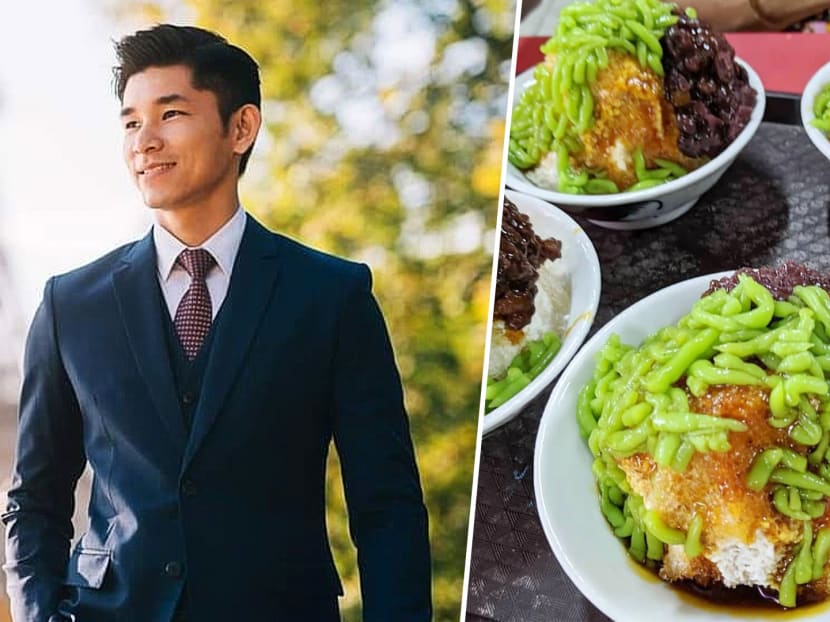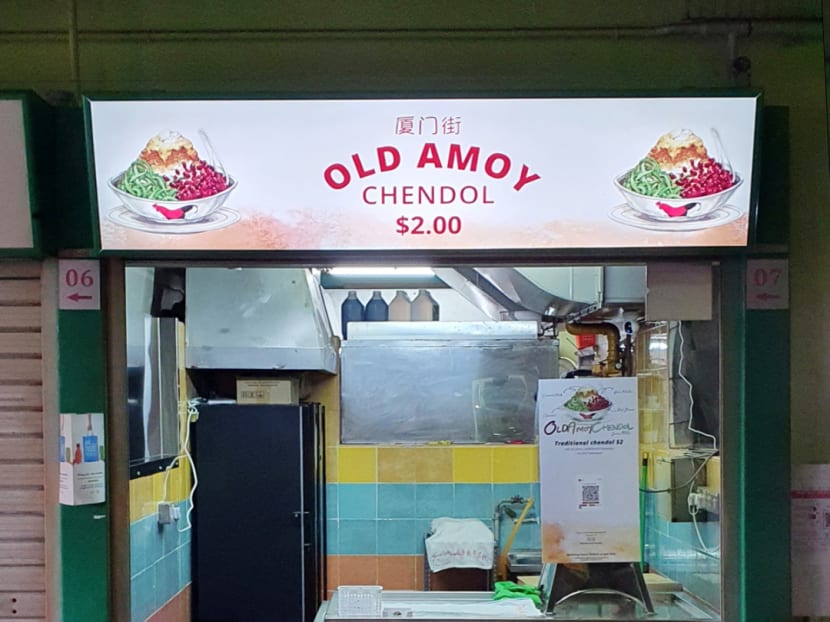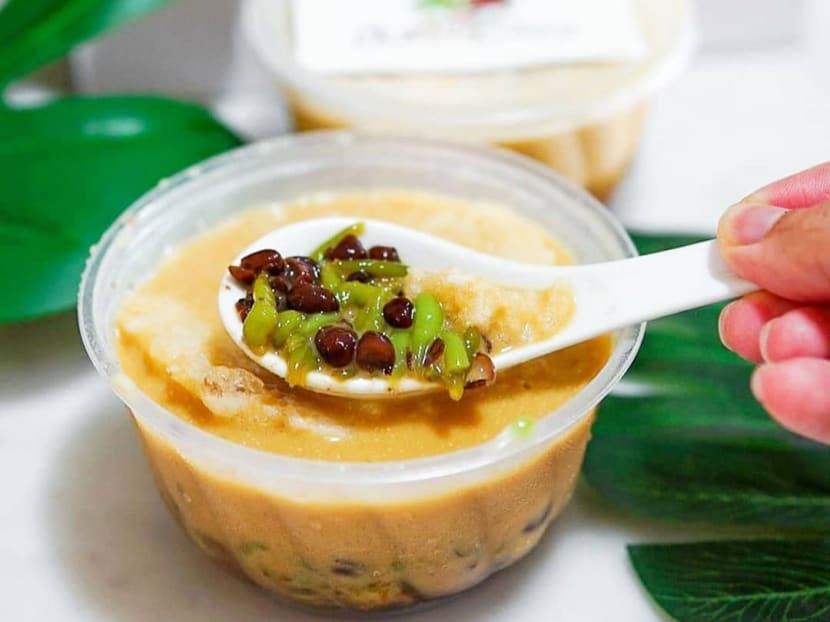Ex-Model Now Runs Chendol Hawker Stall Empire With 7 Outlets
The strapping millennial behind Old Amoy Chendol and its $2 bowls says he wants his brand to be like “Old Chang Kee or Yakun”.

The strapping millennial behind Old Amoy Chendol and its $2 bowls says he wants his brand to be like “Old Chang Kee or Yakun”.
Despite the uncertainty a pandemic brings, some fledgling F&B brands and stalwarts alike are taking the opportunity to expand their operations. Old Amoy Chendol, first opened in 2017 at Chinatown Complex Market & Food Centre (which closed from 12 to 15 Sept because of a recent Covid-19 cluster) by 35-year-old Zhao Youning, is no exception. He quietly opened an outpost in Alexandra Village Food Centre last December, followed by two more stalls in Dunman Food Centre and at a kopitiam in Punggol in early September this year. Another three stalls are slated this October — one of which will be in a mall’s food court in the heartlands, his first outside of a hawker setting.
Old Amoy Chendol made its name selling only one item in one size: $2 for a bowl of chendol that has every component made in-house (down to extruding pandan jelly 'worms' by hand and cold-pressing coconut milk). Its name, Old Amoy Chendol, refers to Amoy Street, where the hawker’s late grandfather operated a pushcart selling the dessert back in the ’50s.
The hawker, who’s currently self-isolating at home in the wake of the recent cluster, tells us that he had to throw away “$3,000 worth of ingredients” from his second stall in Chinatown Complex Market & Food Centre, which he uses for producing most of his ingredients. He will only reopen the stall there on September 20 after disinfecting it once more.
All photos cannot be reproduced without permission from 8days.sg

Why this aggressive expansion to open five new outlets within three months? He explains: “A lot of customers have to travel to visit us in Chinatown. They want to eat [our chendol] more often, but they can’t travel every day. So I chose to expand.” Another reason he decided to expand was due to lessons he gleaned operating his stall in the time of Covid-19. “During the pandemic, there are plenty of takeaways, deliveries and group buys. And a lot of our customers come from all over the island, like Punggol, Jurong, Pasir Ris. I thought why not open stalls [closer to them] instead?”
After all, Old Amoy Chendol didn’t fare too badly during the pandemic. “Business was not really affected. While we were definitely affected in terms of walk-in customers, we [made] an immediate transformation to delivery,” he tells us. “So our business grew because of that, and I saved up our company funds over the last year [to fund the expansion].”
However, he understands that it might not be financially prudent to expand this much now, especially since the expansion is “self-funded”. “I’m definitely worried about the finances too. But people will pay for [trendy] beverages like Mr Coconut, where each cup is $4 or $4.50 if you upsize. I’m quite sure people are willing to pay $2 for chendol.”
Though he has no specific end goal in terms of outlets, he hopes to build a market presence like “Old Chang Kee or Yakun” while preserving traditional flavours. For now though, his plans seem to be paying off — he reported a healthy queue at his new Punggol outlet over the weekend, selling around 400 bowls a day.

Just before setting up Old Amoy Chendol (pictured above with his wife, who isn't involved in the biz), he used to run an industrial water filtering business in China. “My favourite dessert is chendol, and when I came back [to Singapore] and tried to find it, I couldn’t find one that satisfied me,” he says. “I decided to start the stall to preserve the taste of traditional chendol.” The hawker learnt his grandfather’s recipe from his mum (who used to own a small restaurant) and practiced for “eight months” before setting up his first hawker stall in Smith Street, despite having no prior F&B experience.
The steps he takes to elevate his stall’s chendol are straightforward: sourcing good ingredients, and doing everything from scratch, where possible. “With regular dessert stalls, they can [have as many] as 30 items. If your first 15 [items] don’t do well, you still have 15 more chances [to impress customers]. We have just one, and that’s it for us. That’s why we’re more particular about every ingredient,” he muses.
For example, he uses pricier Japanese adzuki beans, stewed in small batches with Indonesian palm sugar, instead of kidney beans that some hawkers prefer. “[Kidney beans] have a bitter aftertaste that you can’t get rid of,” he tells us. Though he used to cook the beans over a charcoal fire, he’s since switched to gas. “It’s just too time-consuming – we need to make sure there’s no disruption to our stalls,” he explains.
He still uses charcoal to melt gula melaka from Sarawak “for extra smokiness” though – it’s produced alongside the beans and hand-extruded pandan jelly (still cooked by Youning and his cousin who helps out). As for the all-important coconut milk, it’s extracted daily via a German-made cold-press juicer from Thai and Malaysian coconuts at “a central kitchen facility” to keep it away from all the heat at the hawker centres.
These ingredients are then delivered to each stall to ensure consistency in the quality of ingredients. No, you won’t often see him at the stalls — he mainly works behind the scenes, preferring to hire aunties to helm each outlet. However, “I usually go to one of the outlets [after making chendol worms daily] to [check on the quality of the chendol],” he says.

For now, Old Amoy Chendol’s various outlets are still peddling the dessert at a rather affordable $2 a bowl – and will continue to do so, even for the upcoming branch in a mall. “We will do our best to remain at $2 across all our outlets,” he tells us. “Unless customers order via delivery platforms, [which has a different price to make up for delivery platforms’ commission].”
He’s also determined to stick with the single-item menu. “As of now, we will not have any new items as production for our chendol ingredients alone takes up many hours daily,” he says.

The chendol hawker is quite the looker— he was a model aged 21 to 25, appearing on a “Men’s Folio cover, a fashion show for Raffles City Shopping Centre donning Hugo Boss apparel, as well as some ads for 7-Eleven”. He shares: “It’s very different work. The focus is more on yourself as you’re the product, rather than working in a company that’s creating the product. Taking care of yourself is the key, like keeping your look [updated] and going to the gym to lift weights.”
He has no regrets making career switches over the years, saying it taught him perseverance. “Others can put you down, but you can never put yourself down,” he muses.
Old Amoy Chendol’s newest outlet is at #01-07, 639 Punggol Dr, S820639. Open daily 10am – 8pm.
The original outlet is at #02-008, Chinatown Complex Market & Food Centre, 335 Smith St, S050335. Tel: 8748-7590. Open daily 1030am – 830pm. For more info on their upcoming outlets, visit Facebook and Instagram. Delivery via Grabfood.
All photos cannot be reproduced without permission from 8days.sg
Photos: Old Amoy Chendol/Facebook






